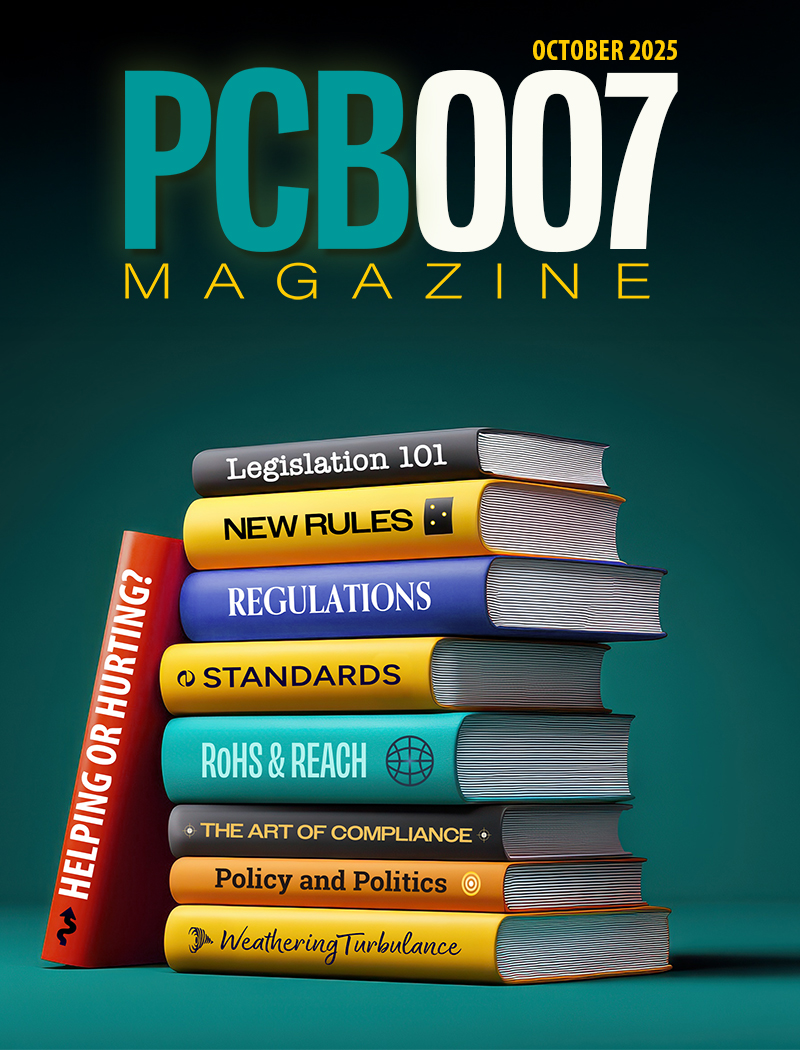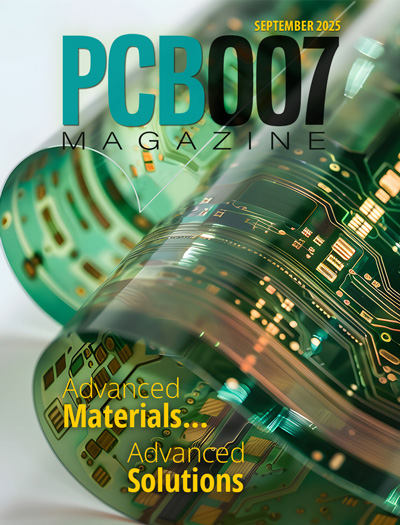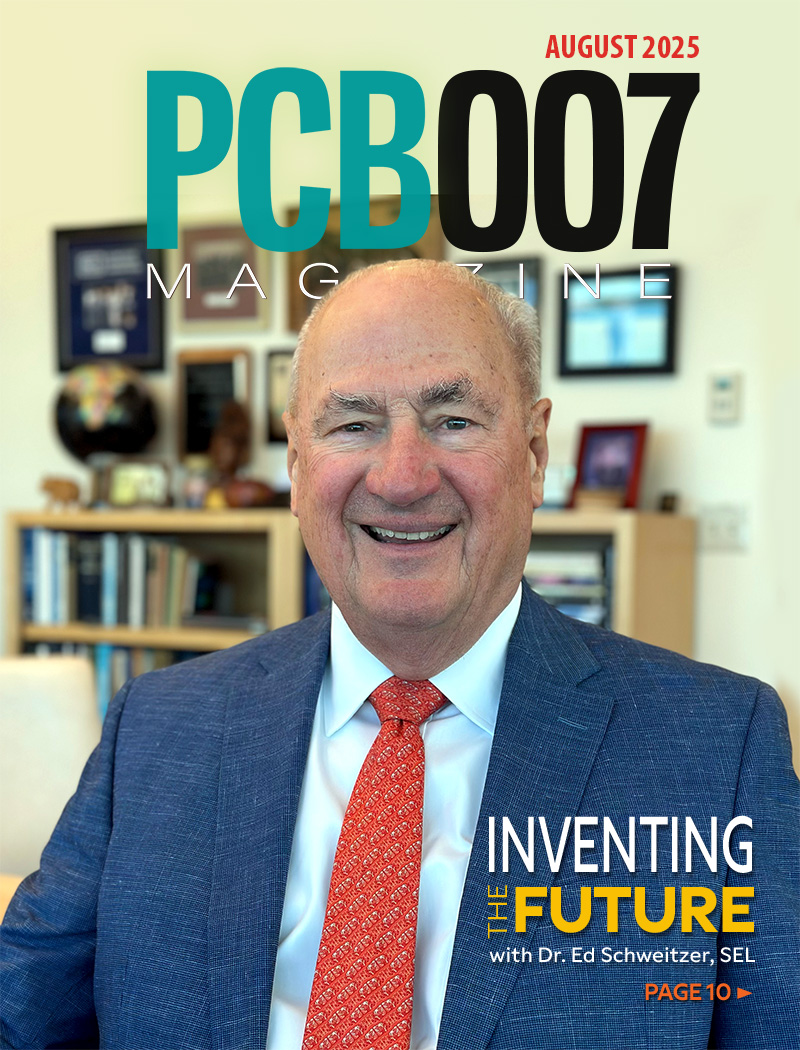-

- News
- Books
Featured Books
- pcb007 Magazine
Latest Issues
Current Issue
The Legislative Outlook: Helping or Hurting?
This month, we examine the rules and laws shaping the current global business landscape and how these factors may open some doors but may also complicate business operations, making profitability more challenging.

Advancing the Advanced Materials Discussion
Moore’s Law is no more, and the advanced material solutions to grapple with this reality are surprising, stunning, and perhaps a bit daunting. Buckle up for a dive into advanced materials and a glimpse into the next chapters of electronics manufacturing.

Inventing the Future With SEL
Two years after launching its state-of-the-art PCB facility, SEL shares lessons in vision, execution, and innovation, plus insights from industry icons and technology leaders shaping the future of PCB fabrication.
- Articles
- Columns
- Links
- Media kit
||| MENU - pcb007 Magazine
Estimated reading time: 1 minute
Best Practices 101, Part 1
Introduction
In the global economy that is today’s business environment, there are no guarantees as indeed, survival is not mandatory! The need for best practices is present in every industry, but mandatory in technology industries such as printed circuit board manufacturing.
In this new series, I will convey some of the personal lessons gained through my intimate involvement with more than 1,000 manufacturing companies, which has allowed me the unique perspective of truly understanding best practices by witnessing both the best of the best and the worst of the worst.
Best Practice - n. In business, a technique or methodology that, through practical experience, has proven to consistently lead to superior results over other means. Applied as a system, it combines all the collective experience, knowledge and technology at one's disposal.
—Williams Business Dictionary, 2014
Process Analysis
One could argue--actually, I would argue--that before any improvement to a process can be made, the current state of the processes must be understood. Process analysis is just a fancy way to say this. If we consider waste to be anything in a process that is not adding value, then the question becomes, how do I identify waste in my process? The most effective method of identifying waste is by process mapping: from basic process flowcharting to advanced value-stream mapping. These two powerful tools will help any organization take the first step toward identifying the value, and non-value, activities in their processes. As my esteemed high school classmate Dr. Shigeo Shingo once famously said, “The most dangerous kind of waste is the waste we do not recognize.”
Read the full column here.
Editor's Note: This column originally appeared in the May 2014 issue of The PCB Magazine.
More Columns from The Right Approach
The Right Approach: Electro-Tek—A Williams Family Legacy, Part 1The Right Approach: Get Ready for ISO 9001 Version 6
The Right Approach: ‘Twas the Night Before Christmas (Harley-style)
The Right Approach: I Hear the Train A Comin'
The Right Approach: Culture Change is Key to a QMS
The Right Approach: Leadership 101—Be a Heretic, Not a Sheep
The Right Approach: Leadership 101—The Law of Legacy
The Right Approach: Leadership 101: The Law of Explosive Growth


